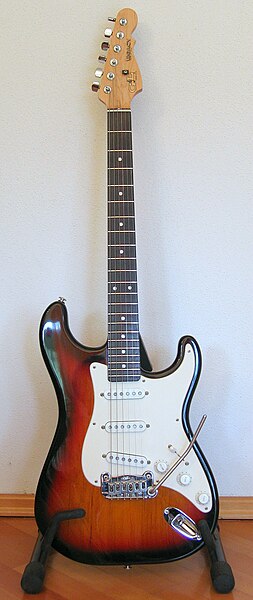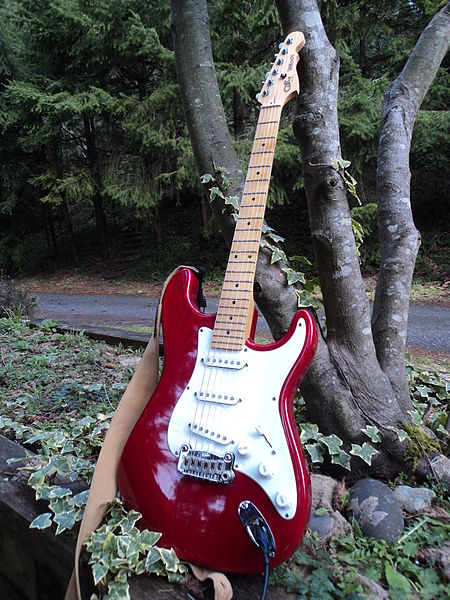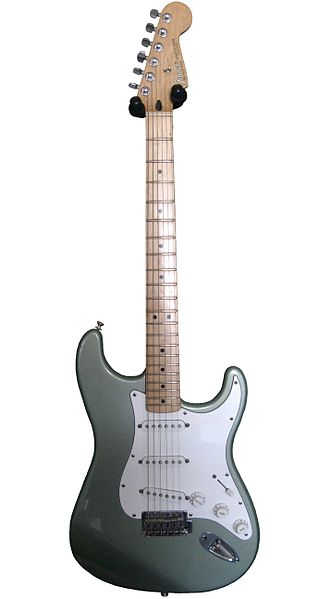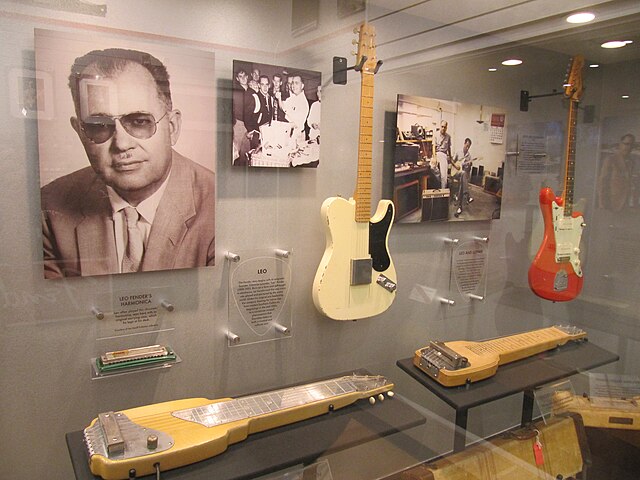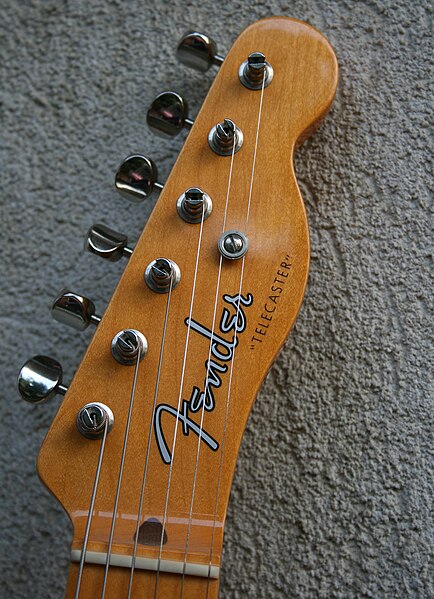G&L is an American guitar manufacturing company founded by Leo Fender, George Fullerton, and Dale Hyatt in the late 1970s. G&L produces electric guitars and basses with designs based on some classic Fender instruments. The company also produces effects units. G&L's most notable player is Jerry Cantrell, vocalist and guitarist of Alice in Chains, having played several models of the guitar since the '80s, Cantrell also has his own signature Tribute Series Rampage and Superhawk. Cantrell can be seen playing a single-humbucker G&L Rampage in the music video for Alice in Chains' "Man In The Box".
Dual-Fulcrum Vibrato
Legacy guitar
L2000 bass
1992 G&L Legacy
The Fender Musical Instruments Corporation is an American manufacturer and marketer of musical instruments and amplifiers. Fender produces acoustic guitars, bass amplifiers and public address equipment; however, it is best known for its solid-body electric guitars and bass guitars, particularly the Stratocaster, Telecaster, Jaguar, Jazzmaster, Precision Bass, and the Jazz Bass. The company was founded in Fullerton, California, by Clarence Leonidas "Leo" Fender in 1946. Andy Mooney has served as the chief executive officer (CEO) since June 2015.
The Stratocaster was released in 1954
Leo Fender and early guitar models at the Fender Guitar Factory Museum.
Fender Telecaster with a "spaghetti logo" from the pre-CBS era


